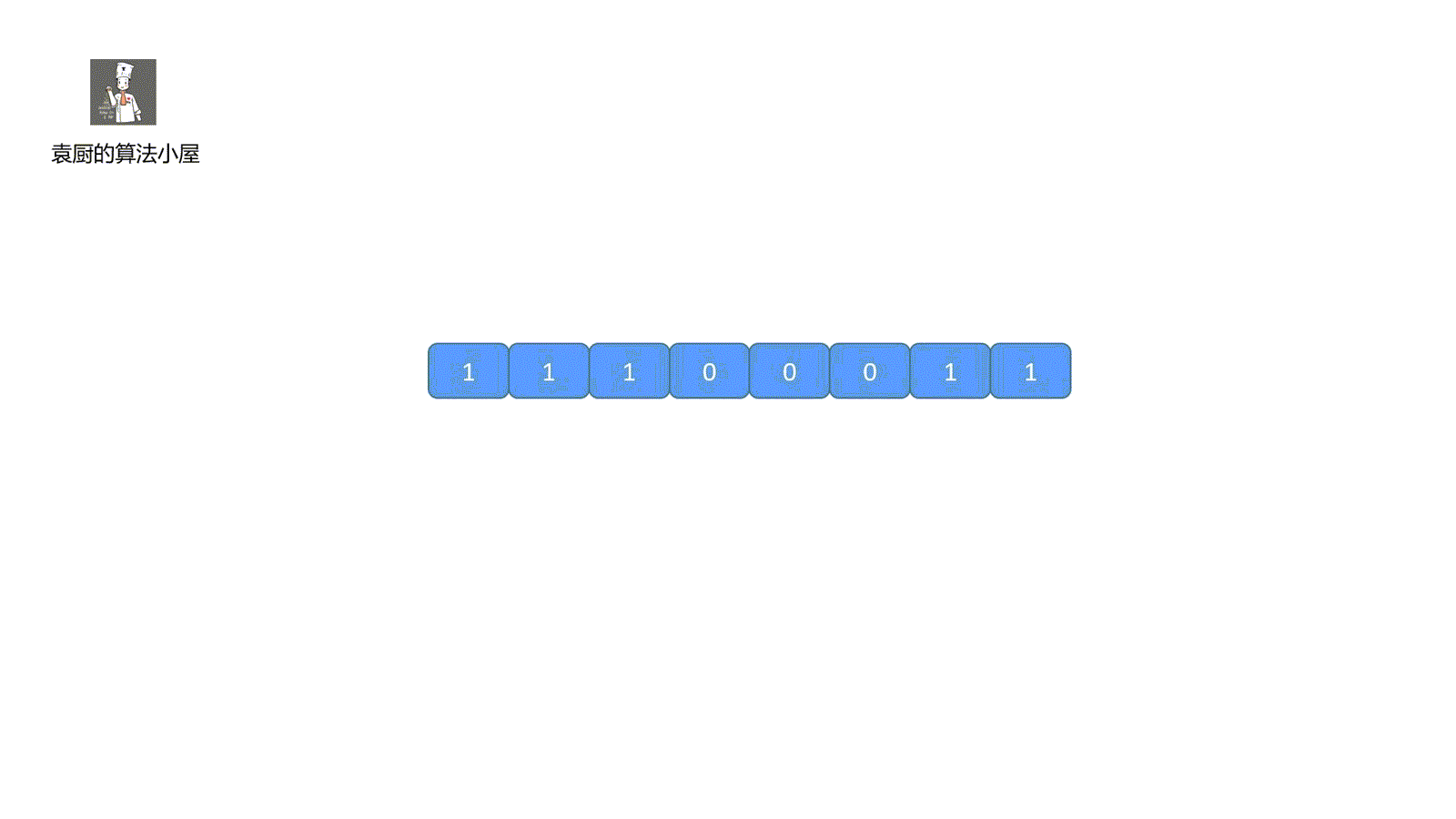14、最大连续1的个数
大约 4 分钟数据结构算法算法基地面试数组双指针滑动窗口刷题程序厨校招社招
题目描述
给定一个二进制数组, 计算其中最大连续 1 的个数。
示例 1:
输入: [1,1,0,1,1,1] 输出: 3 解释: 开头的两位和最后的三位都是连续 1,所以最大连续 1 的个数是 3.
题目解析
我的这个方法比较奇怪,但是效率还可以,战胜了 100% , 尽量减少了 Math.max()的使用,我们来看一下具体思路,利用 right 指针进行探路,如果遇到 1 则继续走,遇到零时则停下,求当前 1 的个数。
这时我们可以通过 right - left 得到 1 的 个数,因为此时我们的 right 指针指在 0 处,所以不需要和之前一样通过 right - left + 1 获得窗口长度。
然后我们再使用 while 循环,遍历完为 0 的情况,跳到下一段为 1 的情况,然后移动 left 指针。 left = right,站在同一起点,继续执行上诉过程。
下面我们通过一个视频模拟代码执行步骤大家一下就能搞懂了。

题目代码
下面我们直接看代码吧
Java Code:
class Solution {
public int findMaxConsecutiveOnes(int[] nums) {
int len = nums.length;
int left = 0, right = 0;
int maxcount = 0;
while (right < len) {
if (nums[right] == 1) {
right++;
continue;
}
//保存最大值
maxcount = Math.max(maxcount, right - left);
//跳过 0 的情况
while (right < len && nums[right] == 0) {
right++;
}
//同一起点继续遍历
left = right;
}
return Math.max(maxcount, right-left);
}
}
C++ Code
#include <vector>
#include <algorithm> // 用于std::max函数
using namespace std;
class Solution {
public:
int findMaxConsecutiveOnes(vector<int>& nums) {
int len = nums.size(); // 获取数组长度,对应Java的nums.length
int left = 0, right = 0; // 左右指针,用于标记连续1的区间
int maxcount = 0; // 记录最长连续1的长度
while (right < len) {
if (nums[right] == 1) {
// 当前元素是1,右指针继续右移
right++;
continue;
}
// 遇到0时,计算当前连续1的长度并更新最大值
maxcount = max(maxcount, right - left);
// 跳过所有连续的0
while (right < len && nums[right] == 0) {
right++;
}
// 将左指针移到新的连续1的起点(当前右指针位置)
left = right;
}
// 最后再比较一次(处理数组以1结尾的情况)
return max(maxcount, right - left);
}
};
刚才的效率虽然相对高一些,但是代码不够优美,欢迎各位改进,下面我们说一下另外一种情况,一个特别容易理解的方法。
我们通过计数器计数 连续 1 的个数,当 nums[i] == 1 时,count++,nums[i] 为 0 时,则先保存最大 count,再将 count 清零,因为我们需要的是连续的 1 的个数,所以需要清零。
好啦,下面我们直接看代码吧。
Java Code:
class Solution {
public int findMaxConsecutiveOnes(int[] nums) {
int count = 0;
int maxcount = 0;
for (int i = 0; i < nums.length; ++i) {
if (nums[i] == 1) {
count++;
//这里可以改成 while
} else {
maxcount = Math.max(maxcount,count);
count = 0;
}
}
return Math.max(count,maxcount);
}
}
C++ Code
class Solution
{
public:
int findMaxConsecutiveOnes(vector<int> &nums)
{
int s = 0;
int e = 0;
int result = 0;
int size = nums.size();
while (s < size && e < size)
{
while (s < size && nums[s++] == 1)
{
e = s;
while (e < size && nums[e] == 1)
{
e++;
};
//注意需要加1, 可以使用极限条件测试
int r = e - s + 1;
if (r > result)
result = r;
s = e;
}
}
return result;
}
};





